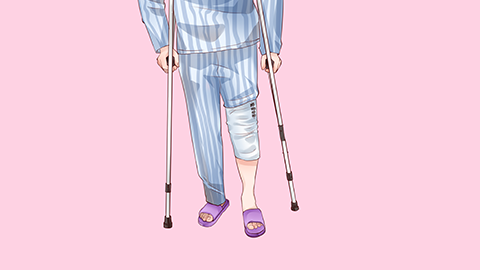What are the symptoms during recovery from a fibula fracture?
Under normal circumstances, the manifestations during fibular fracture recovery mainly revolve around local symptoms, including changes in pain, reduction of swelling, improved mobility, skin and healing sensations, and restoration of weight-bearing capacity. The specific analysis is as follows:

1. Pain changes: In the early stage of fracture, there is significant local pain, which worsens with movement or pressure. During the recovery phase, pain gradually decreases, shifting from constant pain to intermittent dull aches. In later stages, mild discomfort may only occur during extensive movements or accidental contact, eventually disappearing completely.
2. Swelling reduction: Swelling occurs at the injured site after fracture due to local bleeding and inflammatory response. During recovery, swelling gradually subsides, the sensation of tight skin eases, the size of the injured area returns toward normal, and skin color changes from bruised purple or dark red back to normal tone.
p>3. Improved mobility: In the initial stage of fracture, limb movement is severely restricted, making normal bending, extending, or weight-bearing impossible. As recovery progresses, the range of motion gradually increases, allowing simple joint movements such as ankle rotation or slight lifting of the lower leg, eventually leading to gradual restoration of normal limb function.4. Skin sensations and healing perception: During recovery, the skin temperature at the injury site—initially higher or lower than surrounding areas—gradually returns to match that of adjacent skin. Some individuals may feel mild itching or tightness at the fracture site, which are normal signs of bone healing and soft tissue repair.
5. Restoration of weight-bearing ability: Initially, the injured limb cannot bear any weight and requires support from crutches or braces. After reaching a certain stage of recovery, patients can begin to place minimal weight on the limb, such as lightly touching the ground with the toes. As healing progresses, weight-bearing capacity steadily improves.
During recovery, it is essential to follow medical advice for rehabilitation exercises, avoid premature or excessive loading, maintain cleanliness of the injured area, and consume adequate nutrition—especially calcium- and protein-rich foods—to support bone healing and facilitate full functional recovery of the limb.




